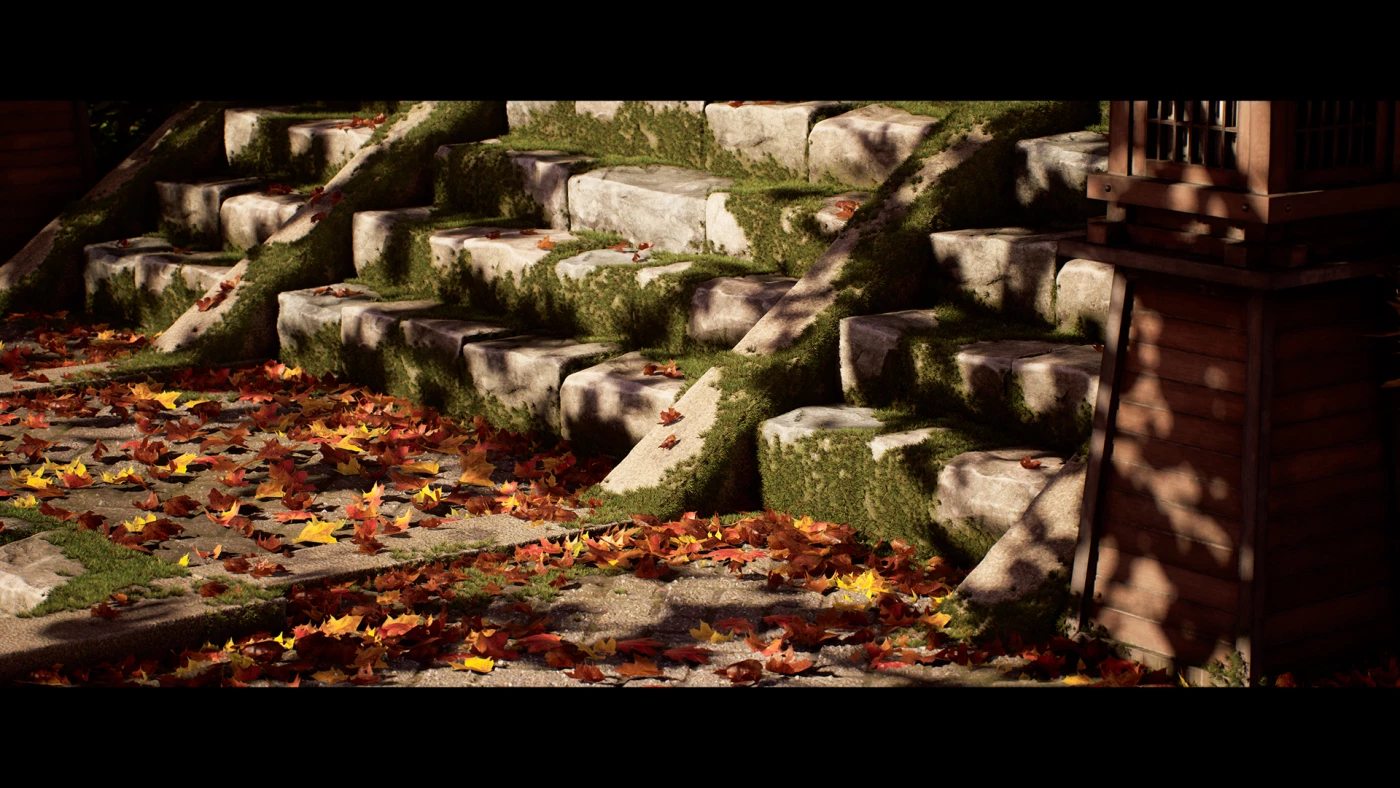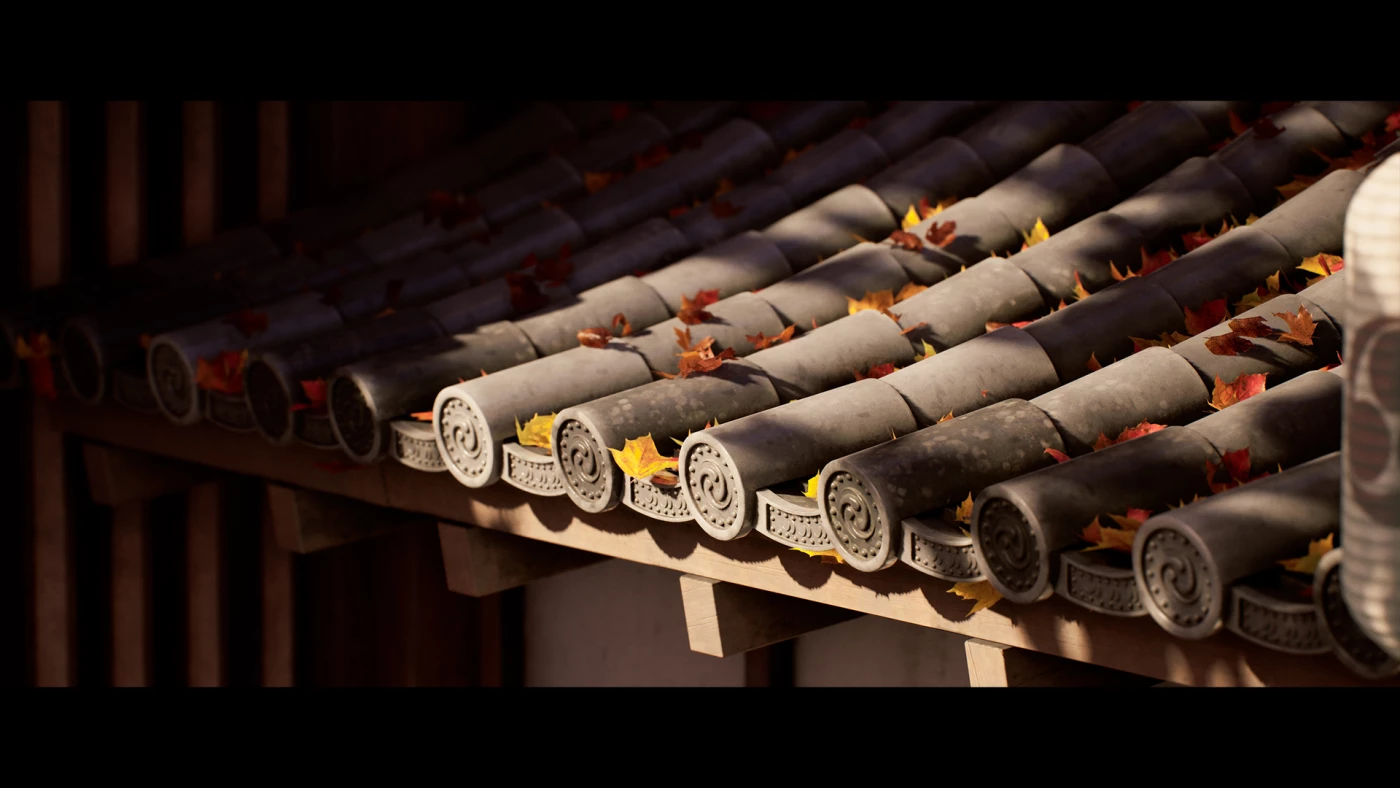Courses > Environment Art
Japanese Environment
By Emiel Sleegers
![]()
![]()
![]()
![]()
![]()
Based on 14 ratings
COURSE SUMMARY
Learn how a professional environment artist works when creating environments for games & cinematics. In this course you will learn from start to finish how to create a high quality environment including everything from modeling, sculpting, material creation, engine setup and lighting.
Course Details
 43 Hours of video Content
43 Hours of video Content
 English
English
![]() Intermediate
Intermediate
![]() Source Files Included
Source Files Included
![]() English, Chinese, Spanish
English, Chinese, Spanish
USD $44.99 10% OFF $49.99
COURSE TRAILER
COURSE DESCRIPTION
Doing project planning and creating proper blockout scenes.
We will explore the correct way to plan your environment and create flexible blockouts, which can subsequently be transformed into final assets. This foundational step ensures a well-structured and efficient workflow for your environment creation process.

Creating assets that make extensive use of nanite..
We will demonstrate how to create assets that leverage the power of Nanite, finding a balance between manageability and quality in your asset creation process.

Creating an advanced shader that allows for highly optimized textures..
We will provide guidance on creating a specialized shader that is employed in multiple AAA games. This shader enables us to significantly reduce the resolution of our textures while preserving a high-resolution appearance, resulting in optimized textures with enhanced fidelity.

Creating tileable materials using both Zbrush and Substance 3d Designer..
We will delve into the creation of both procedural and sculpted materials using Zbrush and Substance Designer. These fundamental materials will serve as the building blocks for generating the majority of textures within the environment.

Doing level art, lighting and post effects in Unreal engine 5.
We will guide you through the process of setting up a complete level in Unreal Engine 5, including lighting the level and implementing post-effects to achieve an impressive final result that enhances the overall visual quality of your environment.

Advanced Displacement & scattering techniques.
We will demonstrate how to incorporate real geometry displacement into our scene while retaining flexibility. Additionally, we will showcase how to scatter small details using GraphN. Thanks to the power of Nanite, we can maintain high framerates while achieving these intricate details.

Creating high-quality foliage assets..
We will illustrate how to craft various types of high-quality foliage assets using SpeedTree and provide guidance on setting them up in UE5 with the appropriate shaders for realistic and visually appealing results.

Various techniques on creating an optimized scene.
We will also delve into the technical aspects of creating an optimized scene, covering topics such as Nanite, mesh distance fields, optimized materials and textures, and various other techniques to ensure your scene performs efficiently while maintaining quality.

Japanese Game Environment – In-Depth Tutorial Course
Learn how a professional environment artist works when creating environments for games & cinematics. In this course you will learn from start to finish how to create a high quality environment including everything from modeling, sculpting, material creation, engine setup and lighting.
3DS MAX, SUBSTANCE, ZBRUSH AND UNREAL ENGINE 5
This course will cover a very large number of topics, but the biggest topics are as followed:
- Doing project planning and creating proper blockout scenes.
- Creating assets that make extensive use of Nanite.
- Creating an advanced shader that allows for highly optimized textures.
- Creating tileable materials using both Zbrush and Substance 3D Designer.
- Creating unique textures using Substance 3D Painter.
- Doing level art, lighting and post effects in unreal engine 5.
- Using advanced Displacement & Scattering techniques to add real displaced textures, moss & leaves.
- Creating high quality foliage assets.
- Various techniques on creating an optimized scene.
And so much more.
The general takeaway of this course is that at the end, you will have the knowledge on how to create exactly what you see in the images, and you can apply this knowledge to almost any type of environment.
43+ HOURS!
This course contains over 43+ hours of content – You can follow along with every single step – This course has been done 100% in real-time with narration except for a few timelapses for very repetitive tasks. However even the timelapsed chapters have also been included as a bonus in real-time.
This course has been divided up into easy-to-understand chapters. We will start the course off by planning our environment and creating our blockout assets.
During this time we will already design our entire level layout.
After this we will first create all of our tillable materials using Substance 3D Designer.
Then we will focus on taking our assets to final, in these stages you will learn everything from modeling in 3ds max (you are able to use your own preferred modeling software), sculpting in Zbrush, UV-Unwrapping in RizomUV and texturing in Substance 3D Painter.
We will then focus on getting all of our final models and textures in Unreal Engine and implementing them in our scene.
We will also be creating an advanced material that allows us to basically render our textures at extremely low resolutions while keeping a high res feel for great performance.
After this is done, we will start focusing on doing our first lighting pass, creating some additional assets and taking our scene closer to final.
We will then go over some advanced scattering techniques which along with the power of nanite allows us to render actual geometry moss and leaves.
Finally, we will finish up by creating some simple foliage, polishing up our scene and optimizing our scene further, take some final screenshots and then this environment is completed.
SKILL LEVEL
This game art tutorial is considered a more advanced course and we require students to have familiarity with a 3d Modeling tool, Zbrush and Unreal Engine 5 – Everything in this tutorial will be explained in detail but we will not be going over the basics of the software mentioned below.
TOOLS USED
- Unreal Engine 5
- 3DS Max (you are able to use other modeling software)
- SpeedTree
- RizomUV
- Marmoset Toolbag 4
- Substance Designer
- Substance Painter
- Zbrush
- GraphN
Please note that most techniques used are universal, so they can be replicated in almost any 3D software like Maya & Blender.
YOUR INSTRUCTOR
Emiel Sleegers is a lead environment artist and owner of FastTrack Tutorials. He’s worked on games like The Division 2 + DLC at Ubisoft, Forza Horizon 3 at Playground Games, and as a Freelancer on multiple projects as an Environment Artist and Material Artist.
CHAPTER SORTING
There’s a total of 102 videos split into easy-to-digest chapters. (MP4 - 2560x1440px)
All the videos will have logical naming and are numbered to make it easy to find exactly the ones you want to follow.
SUBTITLES
Subtitles are offered for this tutorial in English, Spanish, and Chinese.
Please note the subtitles are auto generated and might not always be 100% accurate.
JOIN OUR DISCORD!
https://discord.gg/Uhj6PCjdeX
HIGHLIGHTS
YOUR INSTRUCTOR

Emiel Sleegers is a Lead Environment Artist and the owner of FastTrackStudio, with over 8 years of experience in the AAA game industry. He is known for his expertise as an Environment and Material Artist, as well as his work as a tutor in the field of 3D game art. Emiel has worked for major companies such as Playground Games (Forza Horizon 3) and Ubisoft Entertainment (The Division + DLC). In addition to his work at FastTrackStudio, Emiel also creates learning content for FastTrackTutorials and provides services to clients such as Adobe, MSI, Artstation, Shutterstock, TeamLiquid, Vertex School, and others.
REVIEWS
We feel confident that you will love this course! But incase you do not believe us we will let the reviews speak for us
![]()
![]()
![]()
![]()
![]()
Based on 14 ratings
![]() Eugene Kovalev
Source | Artstation
Eugene Kovalev
Source | Artstation
Really helphull Stuff!!
 MODZ
Source | Artstation
MODZ
Source | Artstation
I love every second of this course, the way he explains things are so easy to understand, will definitely buy more courses from him
 Arturo Bermúdez
Source | Artstation
Arturo Bermúdez
Source | Artstation
I'm only on part 2 of the course, but I can say that this is pure gold. Great material!
 Joseph Huntley
Source | Artstation
Joseph Huntley
Source | Artstation
best as always great delivery really detailed
 Karim Swedan
Source | Artstation
Karim Swedan
Source | Artstation
Emiel publishes great tutorials all the time, but this one is really next level. An incredibly comprehensive tutorial (I'm 20% through atm) with up-to-date industry knowledge that you'd be hard-pressed to find elsewhere. Courses like this are a rarity - so if you are looking into getting into environment art, this course is a definitive buy. Also since I saw someone else complain why the files are compressed: My man, I don't want to download 100+ vids separately, no thank you. ZIP all the way!





